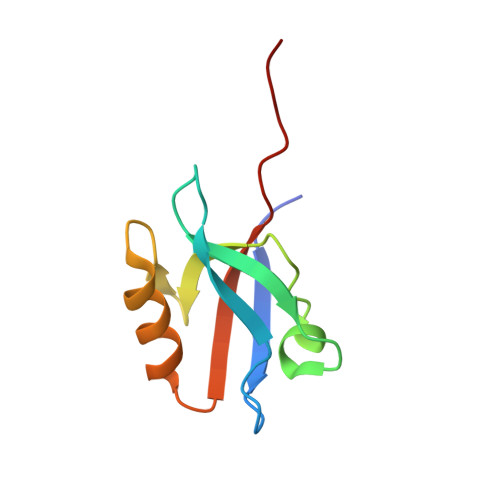Crystal structure of the NHERF1 PDZ2 domain in complex with the chemokine receptor CXCR2 reveals probable modes of PDZ2 dimerization.
Holcomb, J., Jiang, Y., Guan, X., Trescott, L., Lu, G., Hou, Y., Wang, S., Brunzelle, J., Sirinupong, N., Li, C., Yang, Z.(2014) Biochem Biophys Res Commun 448: 169-174
- PubMed: 24768637
- DOI: https://doi.org/10.1016/j.bbrc.2014.04.085
- Primary Citation of Related Structures:
4Q3H - PubMed Abstract:
The formation of CXCR2-NHERF1-PLCβ2 macromolecular complex in neutrophils regulates CXCR2 signaling and plays a key role in neutrophil chemotaxis and transepithelial neutrophilic migration. However, NHERF1 by itself, with only two PDZ domains, has a limited capacity in scaffolding the multiprotein-complex formation. Here we report the crystal structure of the NHERF1 PDZ2 domain in complex with the C-terminal CXCR2 sequence. The structure reveals that the PDZ2-CXCR2 binding specificity is achieved by numerous hydrogen bonds and hydrophobic contacts with the last four CXCR2 residues contributing to specific interactions. The structure also reveals two probable modes of PDZ2 dimerization where the two canonical ligand-binding pockets are well separated and orientated in a unique parallel fashion. This study provides not only the structural basis for the PDZ-mediated NHERF1-CXCR2 interaction, but also an additional example of how PDZ domains may dimerize, which both could prove valuable in understanding NHERF1 complex-scaffolding function in neutrophils.
- Department of Biochemistry and Molecular Biology, Wayne State University School of Medicine, Detroit, MI, USA.
Organizational Affiliation:
















